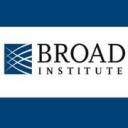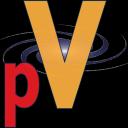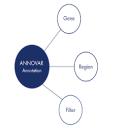Java Dot Plot Alignments (JDotter) is a platform-independent Java interactive interface for the Linux version of Dotter, a widely used program for generating dotplots of large DNA or protein sequences. JDotter runs as a client-server application and can send new sequences to the Dotter program for alignment as well as rapidly access a repository of preprocessed dotplots. JDotter also interfaces with a sequence database or file system to display supplementary feature data. Thus, JDotter greatly s
...continue to readGenePattern is a powerful genomic analysis platform that provides access to more than 150 tools for gene expression analysis, proteomics, SNP analysis, flow cytometry, RNA-seq analysis, and common data processing tasks. A web-based interface provides easy access to these tools and allows the creation of multi-step analysis pipelines that enable reproducible in silico research.
...continue to readCircos is a software package for visualizing data and information. It visualizes data in a circular layout — this makes Circos ideal for exploring relationships between objects or positions. Although originally designed for visualizing genomic data, it can create figures from data in any field. It requires PERL software language.
...continue to readThe Integrated Genomics Viewer (IGV) is a high-performance visualization tool for interactive exploration of large, integrated datasets. It supports a wide variety of data types including sequence alignments, microarrays, and genomic annotations.
...continue to readThe Argo Genome Browser is the Broad Institute's production tool for visualizing and manually annotating whole genomes. It's a free and open source standalone Java 1.4 application.
...continue to readJaMBW, the Java based Molecular Biologist's Workbench, is an online platform that had been put together in order to try to give a free access to the exploitment of the most common bioinformatic operations that a molecular biologist currently has. The peculiar aspect of JaMBW, however, is to take advantage of the foremost developments in computer science in order to deliver information in a way simple to use.
...continue to readVAAST (the Variant Annotation, Analysis and Search Tool) is a probabilistic search tool for identifying damaged genes and their disease-causing variants in personal genome sequences. VAAST can score both coding and non-coding variants, evaluating the cumulative impact of both types of variants simultaneously. VAAST can identify rare variants causing rare genetic diseases, and it can also use both rare and common variants to identify genes responsible for common diseases.
...continue to readAltAnalyze is an easy-to-use application for microarry and RNA-Seq analysis. For splicing sensitive platforms, AltAnalyze will assess alternative exon expression along protein isoforms, domain composition and microRNA targeting. In addition to splicing-sensitive platforms, AltAnalyze provides comprehensive methods for conventional arrays (RMA summarization, QC, statistics, annotation, clustering, lineage characterization and gene-set enrichement).
...continue to readInfernal (inference of RNA alignments) is a software package for searching DNA sequence databases for RNA structure and sequence similarities. It allows you to make consensus RNA secondary structure profiles, and use them to search nucleic acid sequence databases for homologous RNAs, or to create new structure-based multiple sequence alignments.
...continue to readGenomic Evolutionary Rate Profiling (GERP) identifies constrained elements in multiple alignments by quantifying substitution deficits. These deficits represent substitutions that would have occurred if the element were neutral DNA, but did not occur because the element has been under functional constraint. We refer to these deficits as "Rejected Substitutions".
...continue to read
Add to my favorites
Remove from my favorites
The JBrowse Genome Browser
Category: Gene expression, Genomics software




















